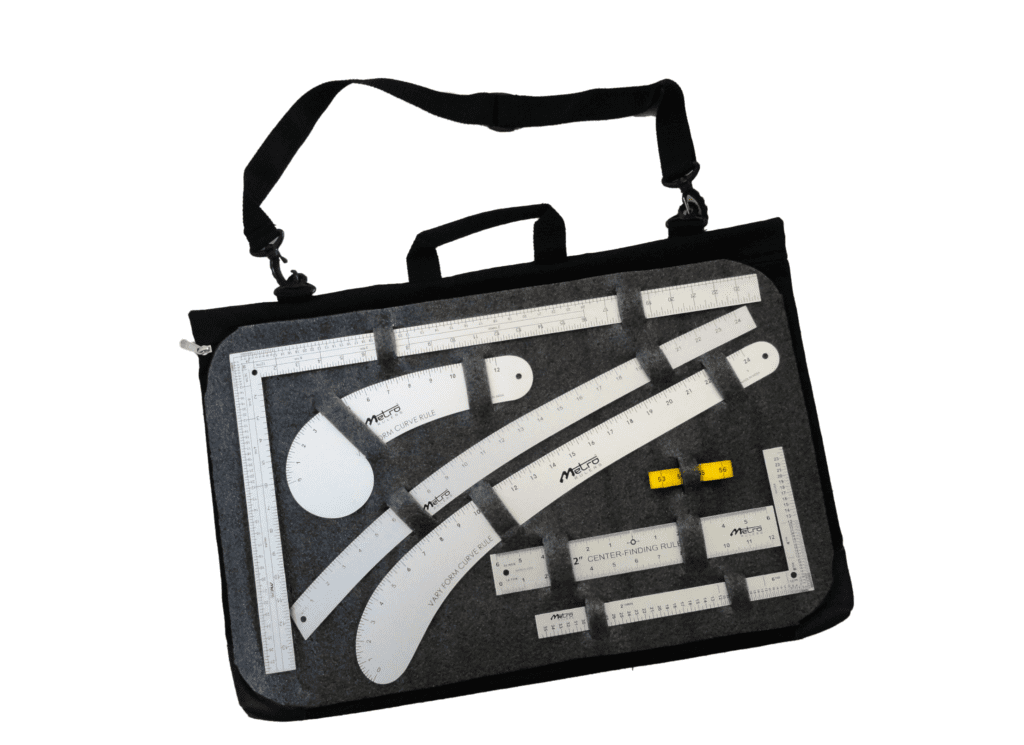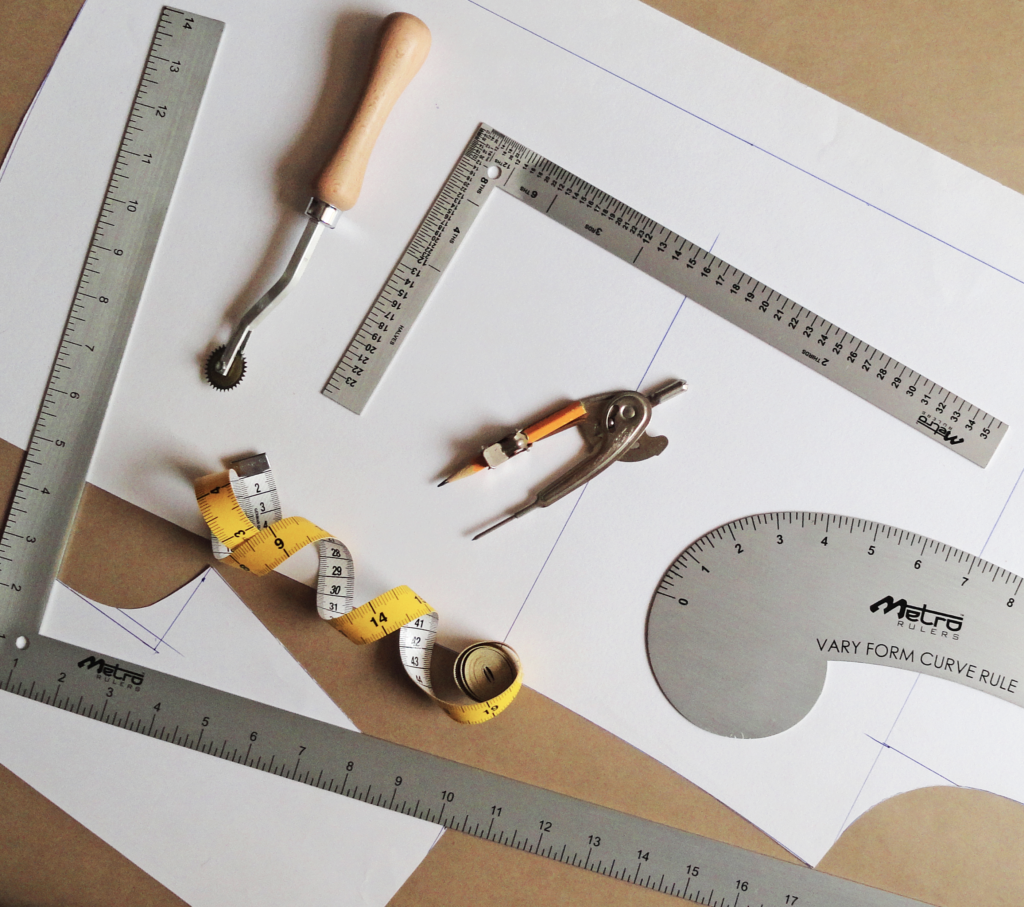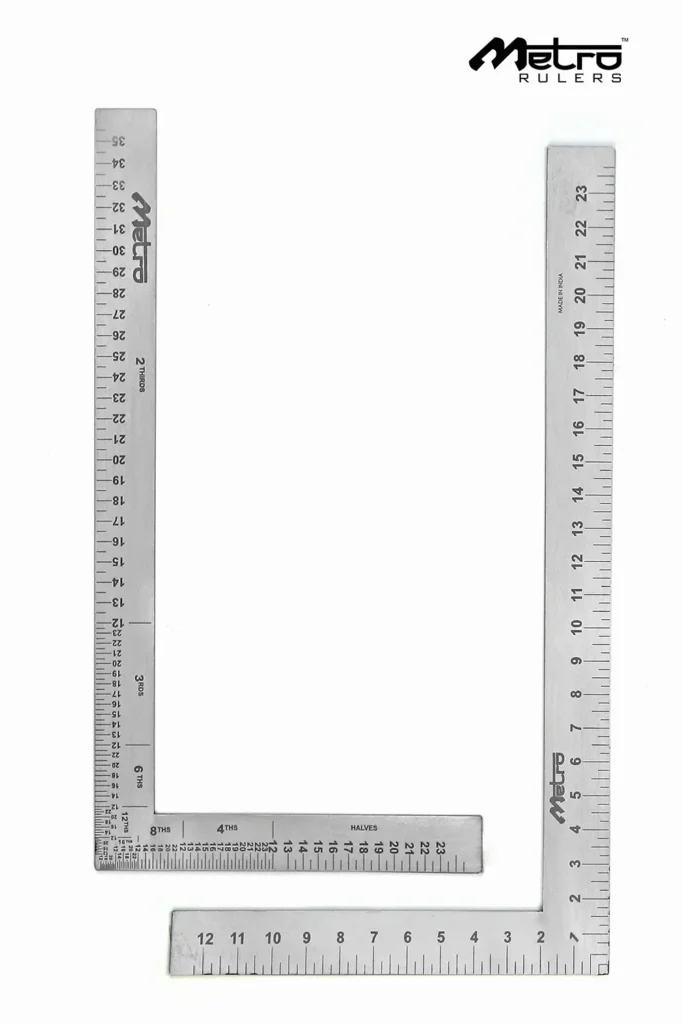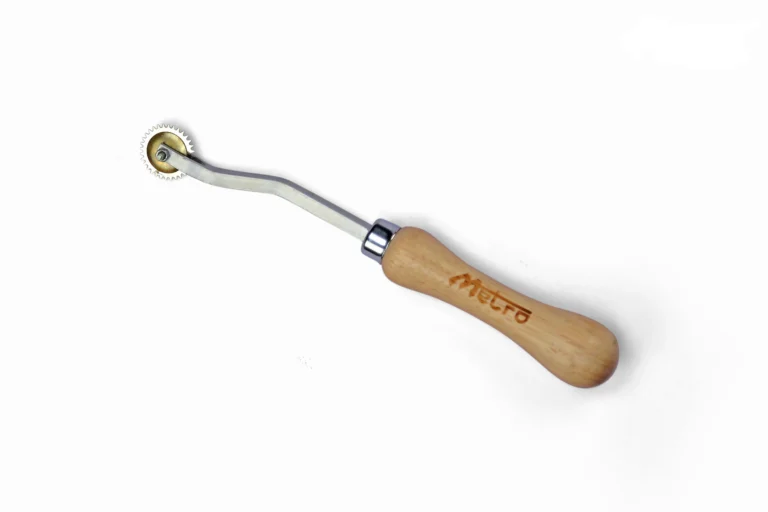Blog
Pattern Drafting Tools: A Comprehensive Guide for Beginners
By Metro Rulers
If you’re new to pattern drafting, it can be overwhelming to know where to start and what tools you need to begin. Having the right tools is essential in creating well-fitting and accurate patterns for your sewing projects. In this blog, we will take you through the basics of pattern drafting tools, their uses, and how to choose the right ones for your projects. Whether you’re an aspiring fashion designer, a DIY enthusiast, or simply curious about pattern drafting, this guide will provide all the information you need in an easy-to-understand format.
Essential Pattern Drafting Tools-
Measuring Tape
One of the most important tools in pattern drafting is a measuring tape. It’s essential to use a flexible measuring tape to get accurate measurements of your body or the person you’re drafting for. When measuring the body, ensure that the tape is snug but not too tight. The tape should also be held parallel to the floor to prevent distortions in the measurements.
French Curve Rulers
French curve rulers are essential tools in creating smooth curves and arcs in your patterns. These rulers come in different shapes and sizes, allowing you to create various curved lines while maintaining precision and accuracy. They are especially useful when designing armholes, necklines, and other curved elements in your patterns.
Hip Curve Ruler
A hip curve ruler is specifically designed to help you create smooth and accurate transitions around the hip and waist areas. It allows you to draw curved lines that perfectly follow the contours of the body, ensuring a well-fitting garment. This ruler is particularly useful when designing skirts, pants, or any pattern that requires shaping around the hips.
L-Square Rulers
L-square rulers are versatile tools that help you create perpendicular lines and right angles in your patterns. They consist of a long arm and a short arm that meet at a 90-degree angle, forming an “L” shape. L-square rulers are useful when you need to draw straight lines or create sharp corners, such as for collars, cuffs, or rectangular pattern pieces.
Pattern Paper
Pattern paper is used to draft the pattern pieces for your project. It comes in various types, including blank rolls or preprinted pattern paper. When choosing pattern paper, consider the type of project and your preferred method of drafting. If you’re a beginner, consider using large sheets of paper as they’re easier to manipulate than smaller pieces.
Rulers and Straight Edges
Rulers are used to draw straight lines on your pattern pieces, ensuring accuracy and precision. Straight edges can also be used to create straight edges for square corners. There are various types of rulers available, such as clear plastic rulers, metal rulers, or gridded rulers. Choose a ruler that suits your preferences and needs.
Tracing Wheel and Tracing Paper
A tracing wheel is a wheel with sharp edges that is used to transfer markings from the pattern onto the fabric. It’s essential to use the wheel on a surface that’s soft enough to leave an impression but not too soft such that it damages the fabric. Tracing paper is also used in the process to transfer pattern markings.
Marking Tools
Marking tools are used to transfer markings from the pattern onto the fabric. Pencils, chalk, or washable markers can be used, depending on the type of fabric and the preference of the user.
Scissors and Rotary Cutter
Scissors and rotary cutters are used to cut the pattern pieces from the fabric. It’s essential to choose scissors or rotary cutters that are sharp to prevent frayed edges. Ensure that you get scissors that are comfortable to grip and easy to handle.
Choosing the Right Tools
When choosing pattern drafting tools, it’s essential to consider various factors such as the type of project, budget, and user preference. It’s also important to opt for high-quality tools that will last you a long time, instead of going for cheaper options that may not be reliable.
Tips for Using Pattern Drafting Tools Effectively
- Always keep your tools clean and sharpened to ensure the best results.
- Proper storage and organization are key to locating your tools when you need them.
- Always check the measurements of your tools to prevent pattern pieces that are off-grain or not symmetrical.
- Practice pattern drafting exercises to improve your skills with the different tools.






